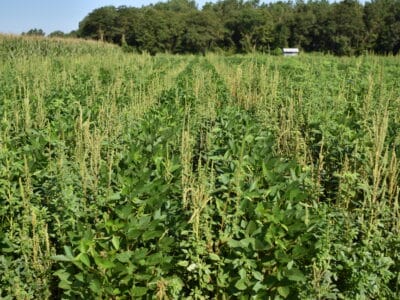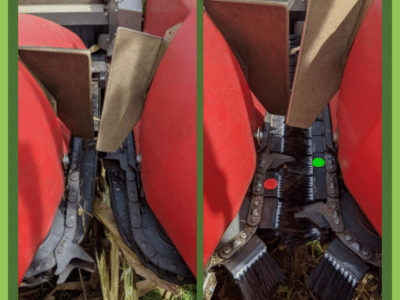
Combating herbicide resistance requires combining herbicide modes of action.
Re-posted from the Texas Row Crops Newsletter, July 10, 2017 article by Muthu Bagavathiannan, Spencer Samuelson, Josh McGinty, Peter Dotray, Gaylon Morgan
Herbicide-resistant weeds are proliferating across Texas. One of the major causes of weed resistance is the use of the same herbicide over and over again without sufficient management herbicide diversity. It is critical that growers must integrate diverse chemical and non-chemical practices to reduce the selection pressure (represented by how quickly a rare resistant plant dominates a field) imposed by any single weed management tool. When multiple tools are used in combination, as opposed to a single management tool, they help each other in reducing the selection pressure exerted by each tool and thereby ensure their continued effectiveness over time. For herbicides, a recommended best management practice is to use the full labeled rate in combination with other herbicides with different modes of action as a tank-mix or in rotation, thereby any plant resistant to one herbicide is effectively controlled by other herbicides used in the system. With this strategy, all herbicides help each other in protecting their utility. In order for this strategy to be effective, a key consideration is that the herbicides used in combination must belong to different modes of action.
So, what is a mode of action? In general terms, it is the way in which a specific herbicide acts and controls a susceptible plant. Herbicides differ in their specific action within the plant system, but some group of herbicides act in a similar way in controlling a plant. These herbicides can belong to completely different chemical families, but still act similarly within the plant in how they control them. To simplify the task of determining which mode of action a given herbicide belongs to, the Weed Science Society of America (WSSA) has developed a numbering system for classifying herbicide modes of action into groups. You will see this group number on the very first page of the herbicide labels. The herbicide product label database www.cdms.net is a very useful resource to locate labels (select ‘label database’ on the top menu and search by product trade name). A list of various herbicides and corresponding mode of action and WSSA group numbers can be accessed here.
Herbicides must be selected such that the management program includes as many effective modes of action as possible and that no single mode of action is used too frequently within the production system. Developing a thorough understanding of herbicide mode of action is therefore imperative. The cotton herbicides pyrithiobac (the active ingredient in Staple®) and trifloxysulfuron (the active ingredient in Envoke®) belong to two different chemical families, but both inhibit the production of branched chain amino acids (known as ALS-inhibitors, WSSA herbicide group 2). Combination of these two herbicides should not be considered as a robust resistance management strategy. On the other hand, a tank-mix of Staple® and S-metolachlor (active ingredient in Dual Magnum®) has completely different modes of action. A synopsis of herbicide mode of action and classification can be found in the quick guide developed by Texas A&M AgriLife Extension specialist Josh McGinty (Corpus Christi).
If resistance is already present for a particular herbicide in your field, that herbicide is not effective anymore on that weed species and does not contribute to mode of action diversity. For example, if you already have glyphosate-resistant Palmer amaranth in your cotton, tank-mix application of dicamba (active ingredient in Xtendimax™ or Engenia™ herbicide, WSSA group 4) and glyphosate (Roundup, WSSA group 9) only provides one effective mode of action, thus exerting high selection pressure for resistance to dicamba. It is therefore important to be aware of what is the current level of weed resistance in your field to various herbicides and put together a strong management program containing multiple effective herbicide modes of action. At Texas A&M University, College Station we conduct herbicide resistance screening free of cost for farmers. Please e-mail muthu@tamu.edu if you would like to send a sample for testing.





























































































